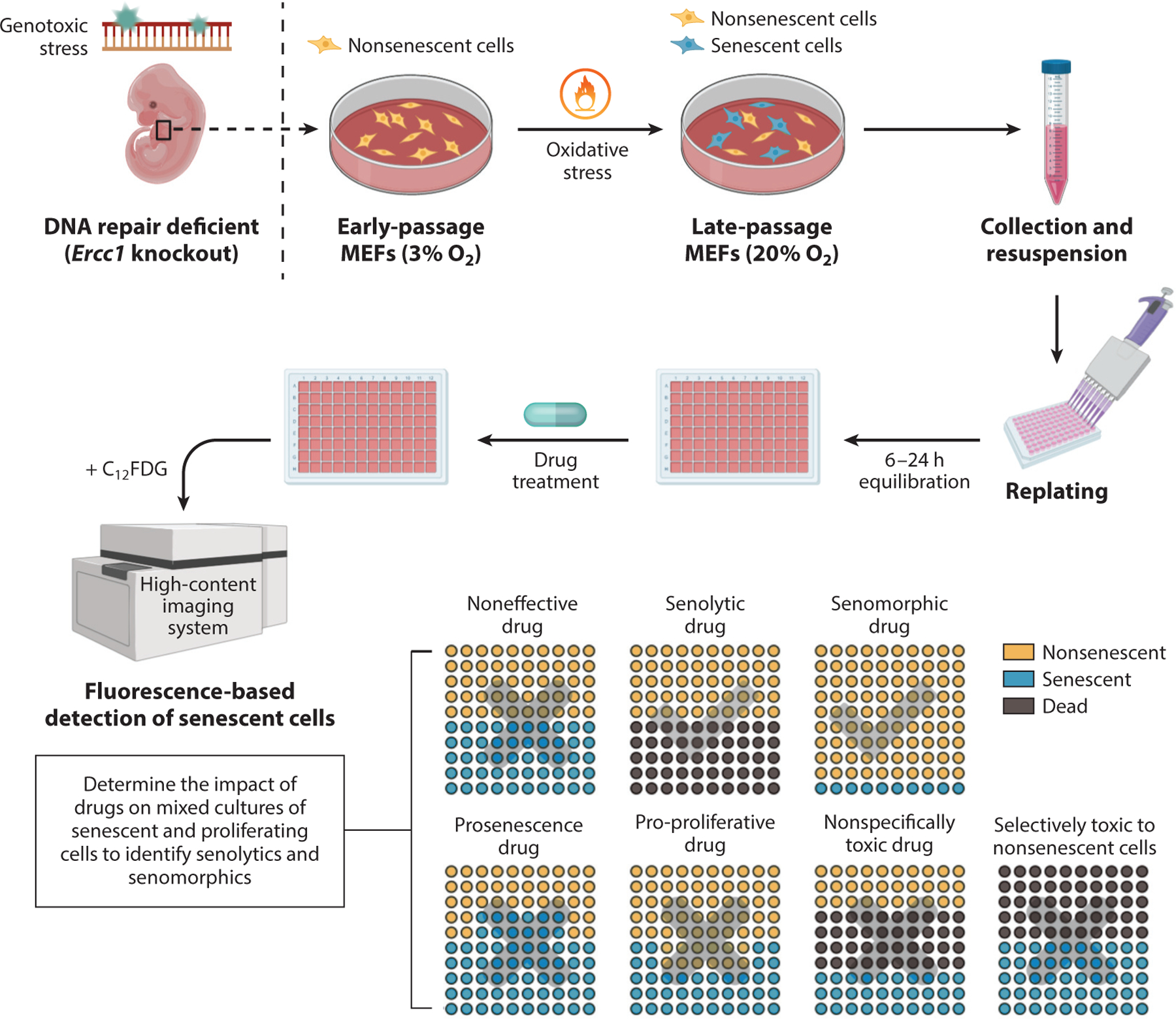Figure 3.

Senescent MEF-based screening assay. MEFs deficient in the DNA repair endonuclease ERCC1-XPF are used to increase physiologically relevant, oxidative stress–induced genotoxic stress and thereby senescence. Greater than 50% of these primary MEFs become SA-βgal positive by passage 5–6 at 20% O2. These cells can then be aliquoted onto a 96- or 384-well plate for drug screening. After drug application, the total number of cells (DAPI-positive nuclei), the number of cells positive for SA-βgal (C12FDG fluorescence), and cell morphology are measured in a high-content fluorescent plate reader. The use of this approach facilitates the identification of senolytic drugs, by which there is a reduction in the number of Sncs preferentially, and senomorphic drugs, by which there is no reduction in the number of cells but a reduction in SA-βgal-positive cells. It is also possible to identify drugs that increase the percent of Sncs on the plate without affecting cell number (prosenescent drugs) and drugs that increase the total number of cells on the plate (pro-proliferative drugs). This approach can address the specificity of the drugs for Sncs over non-Sncs. Subsequent assays are needed to validate the senolytic activity of the hits identified in this screen because some compounds may affect the detection of SA-βgal activity. Figure adapted, with permission, from the original figure by Dr. Rajesh Vyas. Abbreviations: C12FDG, 5-dodecanoylaminofluorescein-di-β-d-galactopyranoside; DAPI, 4′,6-diamidino-2-phenylindole; MEF, mouse embryonic fibroblast; SA-βgal, senescence-associated β-galactosidase; Snc, senescent cell.
